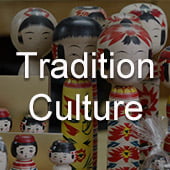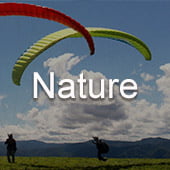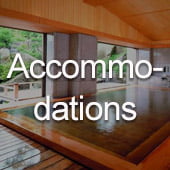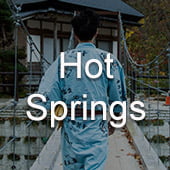Mt. Iwaki, the Most Snow Patterns in Japan -Life with Mt. Iwaki-
Snow Pattern as the “Farming Calendar”
“The old seedling harvesting man has appeared” “The downhill hare has begun to jump, so it must be time for planting rice.” These are some of the typical conversations that were once exchanged in the rice fields among farmers as they gazed at Mount Iwaki, a typical spring scene in Tsugaru.
Mt. Iwaki, covered with snow and completely white, is now melting away with the bright spring sunlight, and the surface of the mountain becomes speckled with patterns. People living in snow country have long referred to the patterns of the mountain surface and lingering snow as “Yukigata” (snow patterns), which they liken to familiar objects such as animals and human figures.
The appearance of snow patterns is a sign of rising temperatures and soil temperatures. In the days when science and agricultural technology were not as advanced as they are today, people used the shape of the snow as a guide for deciding when to sow seeds, plant rice, and do other agricultural work, as well as for gathering wild vegetables, fishing, and working in the mountains.
For the people of that time, the shape of the snow was a valuable message from the mountains and an indispensable “farming calendar” for their daily lives.
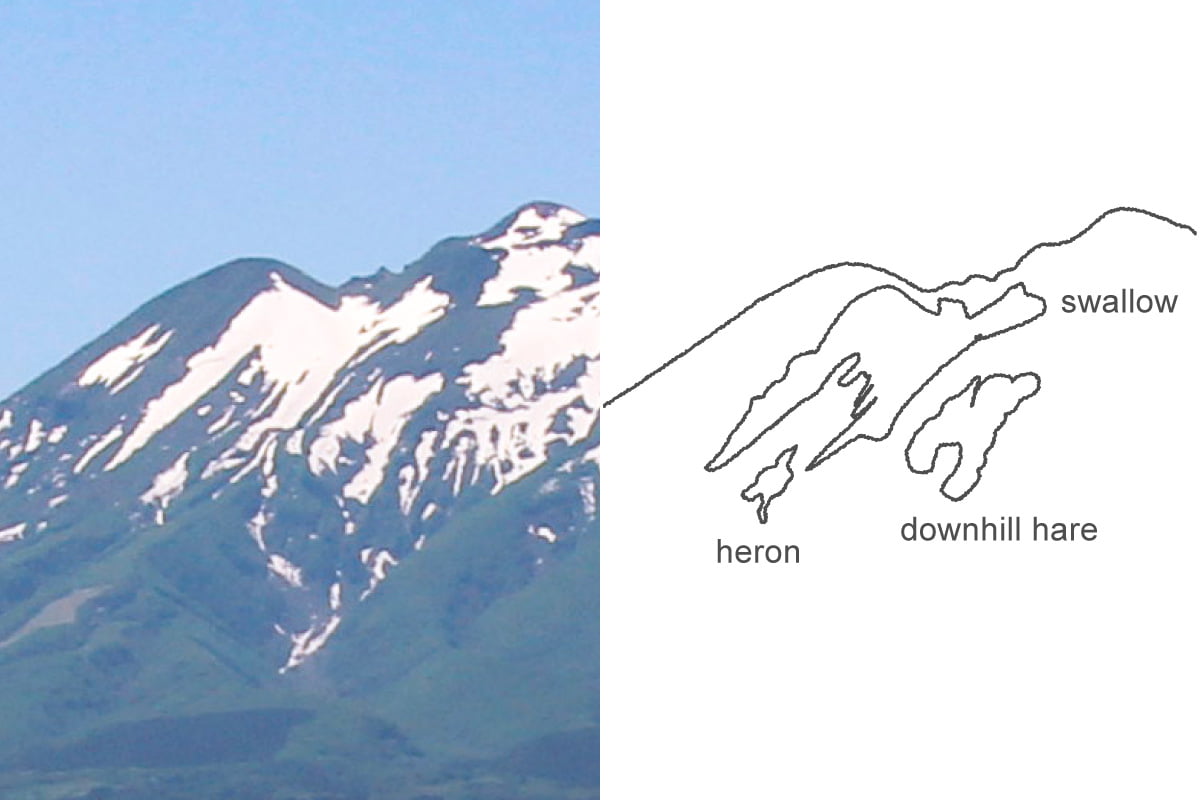
Mt. Iwaki, Japan’s Best “Mountain Where Snow Patterns Dwell”
Snow patterns are often seen in areas with heavy snowfall from Hokkaido to the Chubu region. They are especially common in Niigata and Nagano prefectures, followed by the Tohoku region. In some cases, the names of the snow patterns have become the actual names of places and mountains. People living in snow country have long been familiar with snow patterns.
Incidentally, there are two types of snow patterns: negative and positive. Negative patterns are those in which the surface of the mountain appears, partially blackened where snow melted. On the other hand, a positive pattern is formed by the lingering snow against a black mountainside. The “negative” pattern appears in early spring, and the “positive” pattern appears as the snow melts and more of the mountainside is exposed.
Sugae Masumi, who traveled to Tsugaru in the Edo period (1603-1868), wrote “The Remaining Snow on Mt. Iwaki” in his miscellaneous collection “Nishikigi” (1807), and introduced six snow patterns.
Later as times changed, a mountain photographer, Yukio Tabuchi (1905-1989) popularized the name of Yukigata throughout Japan. His sharply rendered black-and-white photographs impressively highlighted the beauty of snow forms on the surface of mountains and captivated people.
In his book “Yama no Monsho Yukigata” (Gakken Kenkyusha, 1981), he praised Mt. Iwaki as unquestionably the best “mountain where the Yukigata dwells” in Japan. According to a survey conducted at the time, there were more than 130 mountains in Japan where snow patterns could be seen, and among them, Mt. Iwaki, with 24 snow patterns, was named the favorite number one.
The Most in Japan! 42 Snow Patterns Confirmed on Mt. Iwaki
After the publication of “Yama no Monsho Yukigata,” snow pattern research groups and study groups sprang up across Japan, and snow pattern tours were organized, making them a tourist resource as well. Subsequently, the snow patterns of Mt. Iwaki were also surveyed, and new snow patterns have been confirmed.
Mt. Iwaki has 42 confirmed snow patterns, which is the largest number of snow patterns found on a single mountain in Japan,” says Mr. Nobuyoshi Koyama, Director General of the Mt. Iwaki Tourist Association. “The climate has changed so much over the years that the snow patterns may no longer serve as an agricultural calendar. However, it is still fun to find them yourself, as the same snow patterns can look different depending on the angle from which you look at it and the time of year. At nursery schools in the Iwaki area, children enjoy looking at Mt. Iwaki during their walks and finding snow patterns that resemble various characters,” he says.
In recent years, heart-shaped snow patterns have become a hot topic on social networking sites, with posts such as “a heart mark has appeared on Mt.Iwaki!” It is enjoyed by some as art drawn by nature.
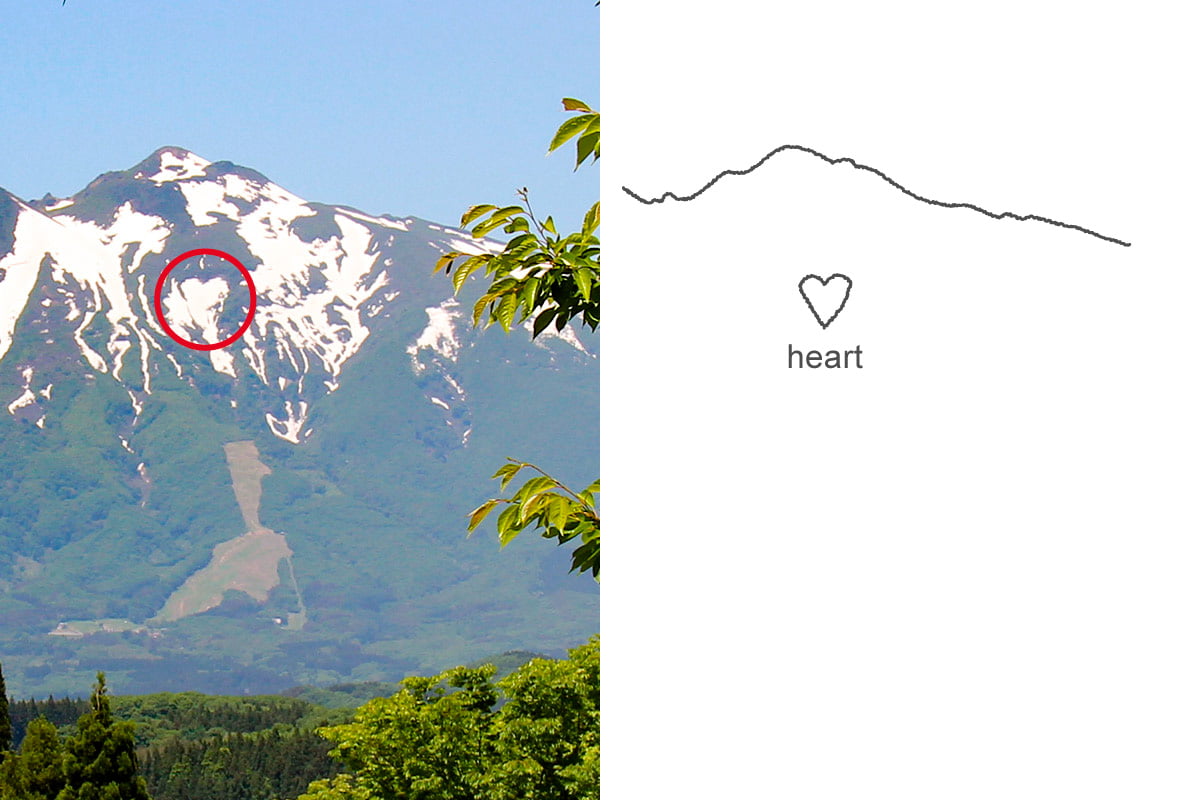
The Audience – the Tsugaru Area Surrounding Mt. Iwaki
It is said that the reason for the abundance of snow patterns on Mt. Iwaki is due to the abundant snowfall, moderate shadows suitable for forming snow forms, and the topographical factors that make the mountain be shaped like a sculpture. However, the most important reason is that it is a single peak that can be seen from all over Tsugaru, and people live and carry on with their lives in the area surrounding Mt. Iwaki. It may be because of its special existence that local people have been familiar with it, viewing it every morning and evening as a place where they call home.
The deep appreciation and reverence for Mt. Iwaki and the flexible and rich imagination of the Tsugaru people have created a variety of patterns on the mountain canvas.
While the snow patterns can be seen from various areas around Mt. Iwaki, it is highly recommended to enjoy the surrounding spectacular spring scenery. A recommended springtime spot is the “world’s largest row of cherry blossom trees” located between 200 and 450 meters above sea level at the foot of Mt. Iwaki. On a clear day, you can enjoy the spectacular collaboration of the cherry blossoms and the snowy patterns of Mt.Iwaki. Oyama-zakura cherry trees have petals that are a deeper pink and more vivid than someiyoshino cherry trees, and the contrast between the cherry blossoms and Mt.Iwaki with the blue sky as a canvas is simply breathtaking. There are many other scenic spots around Mt.Iwaki. This spring, we welcome you to find your own once-in-a-lifetime “my snow pattern.”
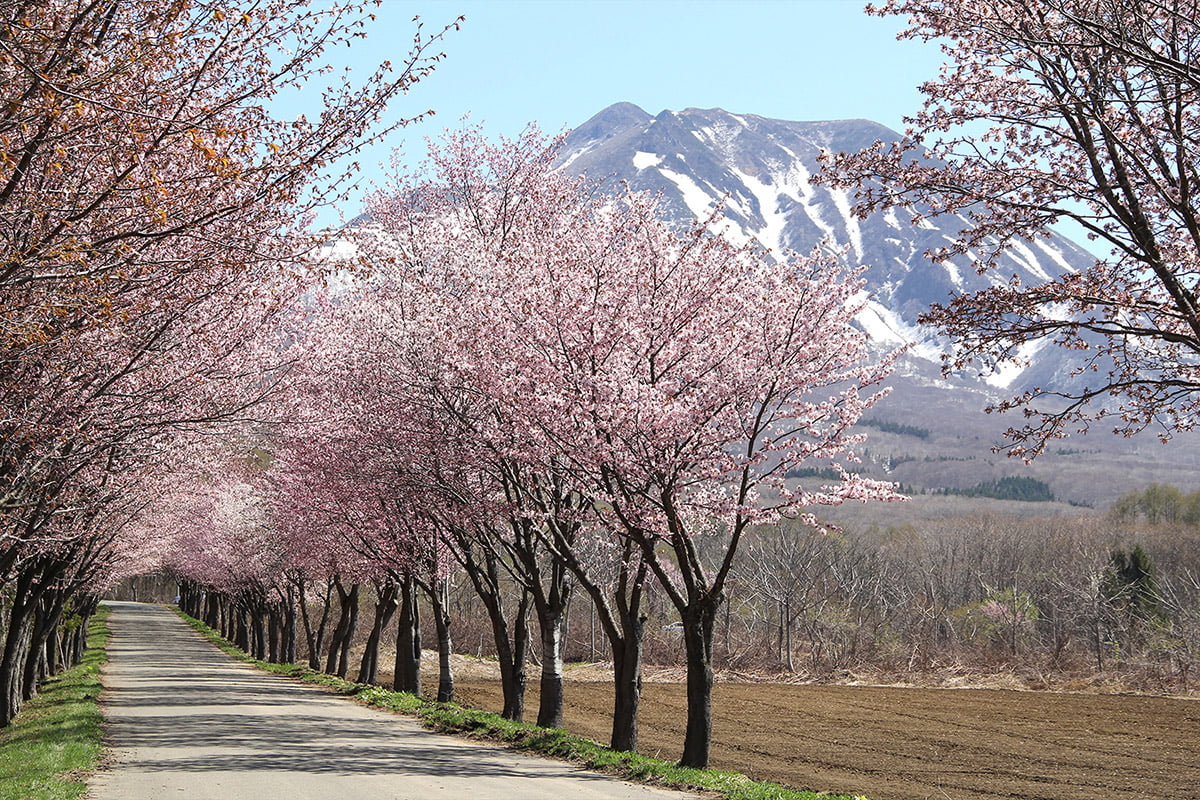
Citations/References
“Iwakisan” Yajie Shinagawa, Tō-Ō Nippō Press
“Tsugarugaku” First Issue, Essay “Mt. Iwaki, the Best Snow Pattern in Japan” by Yoji Murotani, published by Tsugaru ni Manabu Kai
Photo Courtesy and Cooperation
Mt. Iwaki Tourist Association


